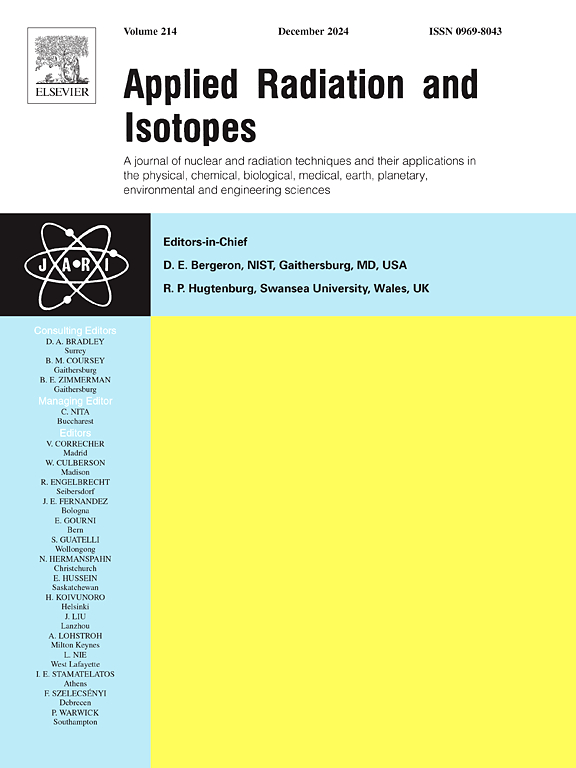Machine learning approaches for improving dosimeter reading accuracy conform with new operational quantities recommended by the ICRU 95
IF 1.8
3区 工程技术
Q3 CHEMISTRY, INORGANIC & NUCLEAR
引用次数: 0
Abstract
This research investigated machine learning (ML) for improving dosimeter reading accuracy under new operational quantities from ICRU 95. Qulxel, InLight, and OSLN dosimeters were irradiated with various photon energies, angles, and accumulated doses. Two ML models were developed: ML1 bases on K-means clustering and linear regression, and ML2 with random forest regression. Both models improved dosimeter reading accuracy compared to the existing algorithm, especially for low-energy photons. ML2, using key features for predictive dose reading, outperformed ML1. The study suggests that machine learning can be a valuable tool for enhancing dosimeter reading and connecting existing quantities to new quantities smoothly.
提高剂量计读数精度的机器学习方法符合ICRU 95推荐的新操作量
本研究探讨了机器学习(ML)在ICRU 95新操作量下提高剂量计读数精度的方法。用不同的光子能量、角度和累积剂量照射quulxel、InLight和OSLN剂量计。开发了两种机器学习模型:基于k均值聚类和线性回归的ML1和基于随机森林回归的ML2。与现有算法相比,这两种模型都提高了剂量计读数的精度,特别是对于低能光子。ML2使用预测剂量读数的关键功能,优于ML1。该研究表明,机器学习可以成为提高剂量计读数和将现有数量与新数量顺利连接的有价值的工具。
本文章由计算机程序翻译,如有差异,请以英文原文为准。
求助全文
约1分钟内获得全文
求助全文
来源期刊

Applied Radiation and Isotopes
工程技术-核科学技术
CiteScore
3.00
自引率
12.50%
发文量
406
审稿时长
13.5 months
期刊介绍:
Applied Radiation and Isotopes provides a high quality medium for the publication of substantial, original and scientific and technological papers on the development and peaceful application of nuclear, radiation and radionuclide techniques in chemistry, physics, biochemistry, biology, medicine, security, engineering and in the earth, planetary and environmental sciences, all including dosimetry. Nuclear techniques are defined in the broadest sense and both experimental and theoretical papers are welcome. They include the development and use of α- and β-particles, X-rays and γ-rays, neutrons and other nuclear particles and radiations from all sources, including radionuclides, synchrotron sources, cyclotrons and reactors and from the natural environment.
The journal aims to publish papers with significance to an international audience, containing substantial novelty and scientific impact. The Editors reserve the rights to reject, with or without external review, papers that do not meet these criteria.
Papers dealing with radiation processing, i.e., where radiation is used to bring about a biological, chemical or physical change in a material, should be directed to our sister journal Radiation Physics and Chemistry.
 求助内容:
求助内容: 应助结果提醒方式:
应助结果提醒方式:


